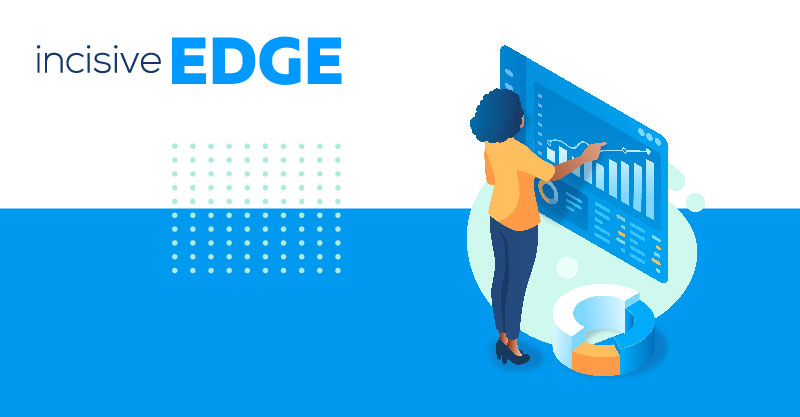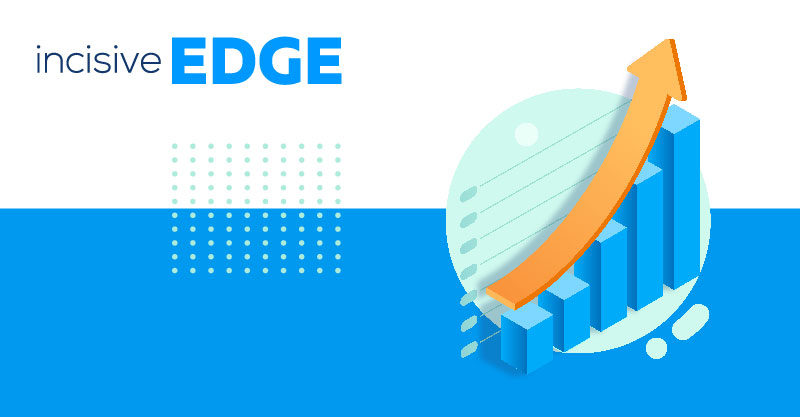There’s no time quite like the new year to launch yourself head long into change.
This year, that was the case for the Incisive Edge agency website, which has undergone a total redesign. From messaging, to wireframing, to design & development. We’re shouting about the results now, and we’ll bring the usual metrics and KPIs to the party as time goes on (early indications are that best practices work!).
What is Website Conversion?
Website conversion optimization, also known as conversion rate optimization, refers to the strategies and techniques used to improve the percentage of website visitors who complete a desired action on a website. The desired action can be any goal, such as making a purchase, filling out a form, or signing up for a newsletter. Average conversion rates are the percentage of website visitors who complete the desired action on your website, and it can vary depending on the industry, website design, and the quality of the traffic. Essentially, conversion rate optimization is about persuading more of your website visitors to take action and move towards becoming a customer or user of your product or service.
In order to increase website conversion, it's important to have a clear understanding of your target audience and what motivates them to take action. This requires analyzing user behavior on your website, creating compelling and relevant content, optimising your website's design and user experience, and implementing effective marketing and advertising strategies.
Check out the following blog for more information on conversion rate optimisation:
- Conversion Rate Optimisation: What is it? Why is it important?
- 3 Great Design Tips to Increase Website Conversion Rate
- How to Increase Conversion Rates Through Content Marketing
- Lead Generation Calculator
How do we calculate Website Conversion Rate?
To calculate your website's conversion rate, divide the number of conversions by the total number of website visitors, and multiply the result by 100.
For example, if your website receives 1,000 visitors and 50 of them make a purchase, your conversion rate would be 5%. This calculation can help you track the effectiveness of your website and marketing efforts, and identify areas for improvement.
What’s a good conversion rate?
The ideal conversion rate for a website depends on a variety of factors, including your industry, target audience, and the specific action you want visitors to take. In general, a good conversion rate is considered to be around 2-5%, which is the average website conversion rate. However, it's important to note that website conversions can vary widely depending on your website's goals and the effectiveness of your marketing and advertising strategies.
What is considered a good rate for your website may change depending on changes to your website or marketing approach. The best way to determine a good conversion rate for your website is to analyze your data over time and continually work to improve your website and marketing efforts to maximize conversions.
Building a site that will improve conversion rates
For you, our network of valued readers and customers, we wanted to share 3 tips and methodologies which we used to get a result that we’re really happy with.
Tell them what makes you different
The sexy, noticeable parts of a website redevelopment tend to lean more on the design side. Exciting changes to colour palette, new graphics that contrast to old styles, awesome interactive tools… the list goes on.
However, wearing our “agency” hat, and being careful to eat our own dog-food; we put something different at the heart of our web refresh.
Positioning.
We started by spending time looking at our market fit, crafting messaging which speaks to our truth as an agency, and appeals to the people we want to do business with.
That may sound like a lot of work, but it’s faster than you’d think.
Within a couple of weeks, we’d repositioned our offerings in a way that told our users what makes us different from the competition, and rolled that message out across the page-wireframes for our new site.
This exercise is something which people don’t always value, but it allows you to take snippets of copy, and apply them across all your web pages, with minor tweaks required to make sure they fit a particular page’s purpose. That speeds up page creation & leaves the reader with a consistent image of your product or service offering.
Show them the results you get for your customers
We live in a world where reviews separate the genuinely exciting from the fraudulently over-sold.
When the website build began, our customers were happy to vouch for the service that IE has delivered over the last few years, and we were excited to be able to put our customer stories at the heart of each page.
Our website is built on Wordpress. Using the helpful global features on the platform, it’s possible to apply one of several fully loaded testimonials to a page build with just a couple of clicks.
One of the benefits of using WordPress is the ability to optimize website conversion rates by improving time on page and reducing bounce rates. Additionally, hosting videos on YouTube can help track views and improve ecommerce conversion rates. Since implementing this strategy, we've noticed more users engaging with our video content in the first month of going live.
Listen to them & encourage the win-wins
We’ve mentioned the metrics which matter to us a couple of times already, and we’re going to do it one more time all the same.
Digital marketing continues to make it easier than ever to listen & observe as your users vote with their feet. Let user action guide you to the best version of your site.
Implementing and properly configuring all your tracking code is absolutely critical to understanding when things have or have not worked. If your user base is bouncing less, converting more and viewing the pages you want them to, then you can be sure that things are moving in the right direction.
We use Google Tag Manager to configure a couple of types of goals, including tracking the performance of our landing pages and measuring our average conversion rate using Google Analytics. This helps boost our site performance by providing insight into how visitors are interacting with our website. Like most people, we want to know about contact forms, but we also want to be sure that our (ungated) content downloads are being used, and that people care about them. Continuously monitoring and analyzing these metrics helps us identify areas for improvement and increase our website's overall performance.
Monitoring content downloads side by side with our commercial goal conversions helps us understand the health at the very top of the funnel, when our future customers are still researching the topics they want to learn more about.
Configure goals on your website which reflect your own purchase process, and make changes to the site based on the impact on those goals.
Over to You
So there you have it! Optimising your website for conversions is among the practices that yields the best ROI for your business. Whether you are an eCommerce business that needs to improve eCommerce conversion rate or a brick and mortar establishment, we've got you covered.
We hope you found our methodology useful, and if you're interested in the results, get in touch with Incisive Edge today and one of our experts will get back to you!





